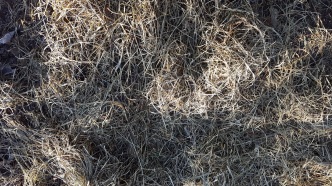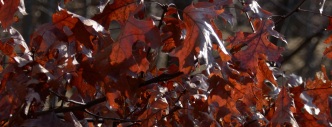 here are a lot of weird articles in the scientific literature, like the one in the
esteemed journal Plos One, where we learn [1] that climate change and
human pressure will impact Arctic and sub-Arctic species and ecosystems:
here are a lot of weird articles in the scientific literature, like the one in the
esteemed journal Plos One, where we learn [1] that climate change and
human pressure will impact Arctic and sub-Arctic species and ecosystems:
Special protection and support should be granted to those semi-domesticated populations that suffered the most because of the collapse of the Soviet Union, in order to protect the livelihood of indigenous peoples that depend on the species, and the multi-faceted role that reindeer exert in Arctic ecosystems.[1]
Yes, things were so much better for reindeer under Communism. What a kidder!
Then there's the article on antibodies by M. Levite in Journal of Neural Transmission[4] that has an 839-character title, possibly the longest ever. There's not enough space to post the entire title here; see footnote #4 if you're interested.
Another one is an article by by C. Bensen in Nursing Standard titled “You cannot have student cake and eat it too.”[2] Here is the abstract in its entirety:
I feel readers may have been given the wrong impression about what I was trying to say in my last email (letters February 26). I have worked with many students who are trying to survive on a measly bursary, although I am one of the lucky ones who have been seconded.
There is an interesting story behind this, I'm sure. But it was getting late so I moved on, and finally I found something upbeat: an article [3] by M.F. Holick of Boston University, who tells us that yes, we can indeed have our cake and eat it too.
Ah, but it was just an editorial about vitamin D. Since we humans evolved not to have hair, the article says, it stands to reason that we should be able to produce more vitamin D, since it's made when our skin cells secrete 7-dehydrocholesterol to the surface of our skin, where it's converted into previtamin D3 by UVB (290–315 nanometers). Previtamin D3 is then converted by membrane-enhanced isomerization into vitamin D3, which then travels to the liver and gets oxygenated to 25(OH)D3, and thence to the kidneys where it gets converted to the active form, 1,25-dihydroxyvitamin D3.
It's even been speculated that Neanderthals also had a Celtic skin tone, not to maximize their hunting efficiency, but to maximize their vitamin D production.

A person with dark coloration would be easy to spot against this typical northern background.

A person with red hair would be camouflaged in an environment with oak trees.
In high latitude places, like Denmark, the good doctor continues, this skin irradiation doesn't happen enough. What the article was saying is that light-skinned people can't have their cake and eat it too: they can take advantage of the beneficial effect of sun exposure, but only at the cost of increasing their risk for skin cancer. So we can conclude that Santa Claus probably has a vitamin D deficiency, which results in rickets.
Now, this is starting to get annoying.
It's always been my contention that we've gotten this all wrong about skin color. The dogma is that melanin protects against UV light by absorbing it and protecting the cells underneath, since UV light can cause thymidine dimerization that can lead to skin cancer. That's probably true, but nature doesn't care about things like this. It's far more likely that light skin is a form of camouflage for people who live in areas covered in snow, just as it is for Arctic foxes and polar bears. If you're a blonde, it's much easier to sneak up on a poor innocent reindeer if you're the same color as the snow and thus harder to see.
What's happening here is that we're seeing things from the point of view of people who commute to work and live in air-conditioned homes and buy our food in nice big grocery stores, and we're no longer concerned with day-to-day survival. It's a challenge to remember that life used to be nasty, brutal and short, and that for our ancestors, the primary concern was staying warm and getting enough food to stay alive. Climate change, cancer, and Alzheimer's disease weren't even on the radar. And neither was Santa Claus.
We are lucky to live in a world where where the idea of a Santa Claus (and the idea of a Christ, for that matter) exists.
References
1. Uboni A, Horstkotte T, Kaarlejärvi E, Sévêque A, Stammler F, Olofsson J, Forbes BC, Moen J. (2016) Long-Term Trends and Role of Climate in the Population Dynamics of Eurasian Reindeer. PLoS One. Jun 30;11(6):e0158359. doi: 10.1371/journal.pone.0158359.
2. Benson C. (2003). You cannot have student cake and eat it too. Nurs Stand. Apr 2;17(29):31.
3. Holick MF. (2016). Can you have your cake and eat it too? The sunlight D-lema. Br J Dermatol. 2016 Dec;175(6):1129–1131. doi: 10.1111/bjd.15127.
4. M Levite (2014). Glutamate receptor antibodies in neurological diseases: anti-AMPA-GluR3 antibodies, anti-NMDA-NR1 antibodies, anti-NMDA-NR2A/B antibodies, anti-mGluR1 antibodies or anti-mGluR5 antibodies are present in subpopulations of patients with either: epilepsy, encephalitis, cerebellar ataxia, systemic lupus erythematosus (SLE) and neuropsychiatric SLE, Sjogren's syndrome, schizophrenia, mania or stroke. These autoimmune anti-glutamate receptor antibodies can bind neurons in few brain regions, activate glutamate receptors, decrease glutamate receptor's expression, impair glutamate-induced signaling and function, activate blood brain barrier endothelial cells, kill neurons, damage the brain, induce behavioral/psychiatric/cognitive abnormalities and ataxia in animal models, and can be removed or silenced in some patients by immunotherapy. J Neural Transm (Vienna). Aug;121(8):1029–75. doi: 10.1007/s00702-014-1193-3. Link
dec 25 2016, 1:17 pm; revised nov 13, 2017

